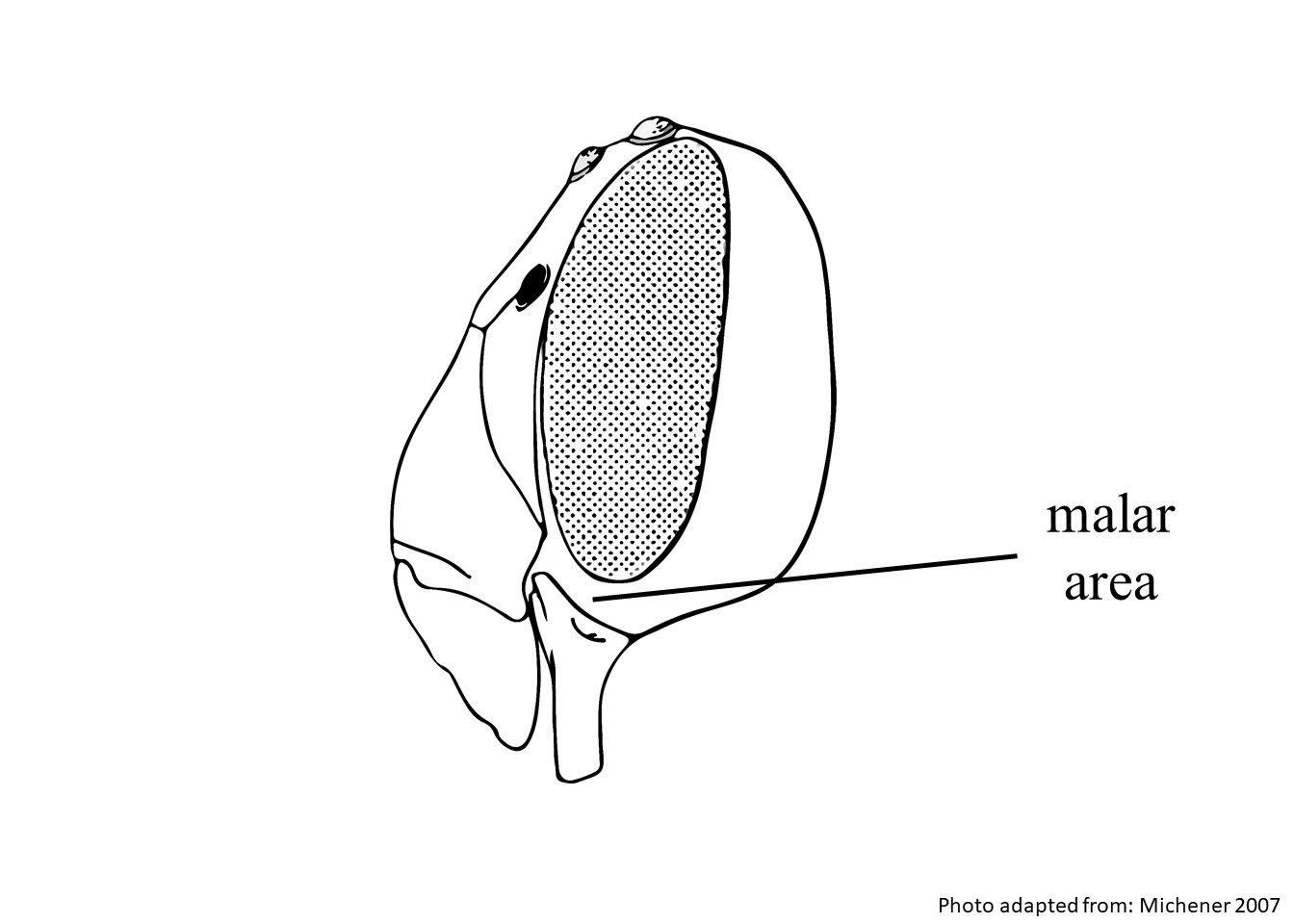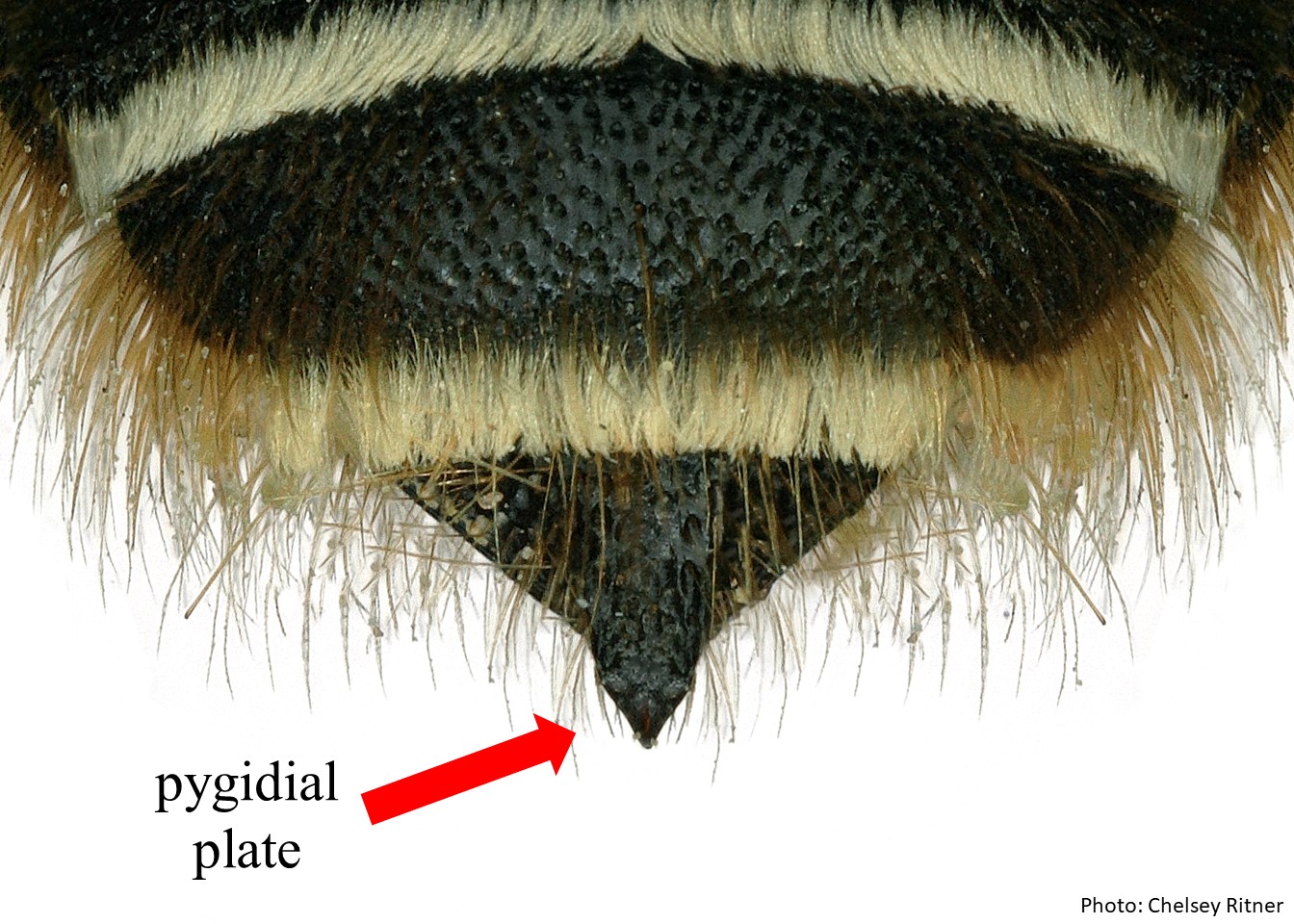Family: Apidae
Subfamily: Xylocopinae
Tribe: Xylocopini
Genus: Xylocopa
Subgenus: Xylocopa s. str., Latreille 1802
Common name: Carpenter bee
Xylocopa (Xylocopa) are medium sized bees, 16 – 25 mm in length, with black integumentintegument:
a tough, protective outer layer
covered by moderately thick brown to black pubescencepubescence:
short, fine hair
. Their wing are dark brown with vibrant green or blue iridescent reflections (Hurd and Moure 1963Hurd and Moure 1963:
Hurd, P.D. and J.S. Moure. 1963. A Classification of the Large Carpenter Bees (Xylocopine) (Hymenoptera: Apoidea). University of California Publications in Entomology (Vol. 29). Berkeley and Los Angeles: University of California Press, 365 pp.).
Xylocopa (Xylocopa) includes 5 species (Hurd and Moure 1963Hurd and Moure 1963:
Hurd, P.D. and J.S. Moure. 1963. A Classification of the Large Carpenter Bees (Xylocopine) (Hymenoptera: Apoidea). University of California Publications in Entomology (Vol. 29). Berkeley and Los Angeles: University of California Press, 365 pp.; Kuhlmann et al. 2012Kuhlmann et al. 2012:
Kuhlmann, M., et al. 2012. Checklist of the Western Palaearctic Bees (Hymenoptera: Apoidea: Anthophila). http://westpalbees.myspecies.info/taxonomy/term/3760.; Kumari and Sidhu 2020Kumari and Sidhu 2020:
Kumari, P., A.K. Sidhu. 2020. Diversity of Apoidea (Hymenoptera) from Grassland ecosystem of Jammu (UT of Jammu and Kashmir). Journal of Entomology and Zoology Studies 8(4): 424-427.)
Xylocopa (Xylocopa) is known from Mediterranean Africa north through Europe to Russia and east to China (Michener 2007Michener 2007:
Michener, C.D. 2007. The Bees of the World (2nd ed.). Johns Hopkins University Press, Baltimore and London, 953 pp.).

Distribution map generated by Discover Life -- click on map for details, credits, and terms of use.
Xylocopa (Xylocopa) are generalist pollinators that have been observed visiting the flowers of many plant families including Actinidiaceae, Asteraceae, Brassicaceae, Convolvulaceae, Cucurbitaceae, Fabaceae, Geraniaceae, Grossulariaceae, Lamiaceae, Liliaceae, Lythraceae, Malvaceae, Nyctaginaceae, Oleaceae, Papaveraceae, Plantaginaceae, Rosaceae, Rutaceae, Solanaceae, Verbenaceae, and Violaceae (Vicidomini 1995Vicidomini 1995:
Vicidomini, S. 1995. Biologia di Xylocopa ( Xylocopa ) violacea (L., 1758): Specie di Foiori Visitate Dalla Femmina (Hymenoptera: Apidae). Entomologica 29: 199-214.).
(modified from Hurd and Moure 1963Hurd and Moure 1963:
Hurd, P.D. and J.S. Moure. 1963. A Classification of the Large Carpenter Bees (Xylocopine) (Hymenoptera: Apoidea). University of California Publications in Entomology (Vol. 29). Berkeley and Los Angeles: University of California Press, 365 pp.)
 short.
short. narrow, parallel-sided, and with subapicalsubapical:
narrow, parallel-sided, and with subapicalsubapical:Xylocopa (Xylocopa) are most similar to X. (Ctenoxylocopa) and X. (Biluna). Males can be distinguished by the combination of the tegulategula:
the usually oval, small shield-like structure carried at the extreme base of the wing where it attaches to the body that is impunctateimpunctate:
marked with punctures or pits
in the posterolateral third, rounded scutellumscutellum:
shield shaped plate behind scutum, and hind tibiatibia:
the segment of the leg, between the femur and the tarsus with two apicalapical:
near or at the apex or end of any structure
spines. Females can be distinguished by the combination of their tridentatetridentate:
having three teeth
mandibles and hind tibiatibia:
the segment of the leg, between the femur and the tarsus with two apicalapical:
near or at the apex or end of any structure
spines (Minckley 1998Minckley 1998:
Minckley, R. L. 1998. A Cladistic Analysis and Classification of the Subgenera and Genera of the Large Carpenter Bees, Tribe Xylocopini (Hymenoptera: Apidae). Natural History Museum, The University of Kansas 9: 1-47.).
Xylocopa (Xylocopa) has been recorded using a variety of materials for nesting, from dead trees to hollow stems and on rare occasions in the ground (Hurd and Moure 1963Hurd and Moure 1963:
Hurd, P.D. and J.S. Moure. 1963. A Classification of the Large Carpenter Bees (Xylocopine) (Hymenoptera: Apoidea). University of California Publications in Entomology (Vol. 29). Berkeley and Los Angeles: University of California Press, 365 pp.).
There are no known invasives.
Hurd, P.D. and J.S. Moure. 1963. A Classification of the Large Carpenter Bees (Xylocopine) (Hymenoptera: Apoidea). University of California Publications in Entomology (Vol. 29). Berkeley and Los Angeles: University of California Press, 365 pp.
Keasar, T. 2010. Large Carpenter Bees as Agricultural Pollinators. Psyche doi:10.1155/2010/927463.
Kuhlmann, M., et al. 2012. Checklist of the Western Palaearctic Bees (Hymenoptera: Apoidea: Anthophila). http://westpalbees.myspecies.info/taxonomy/term/3760.
Kumari, P., A.K. Sidhu. 2020. Diversity of Apoidea (Hymenoptera) from Grassland ecosystem of Jammu (UT of Jammu and Kashmir). Journal of Entomology and Zoology Studies 8(4): 424-427.
Michener, C.D. 2007. The Bees of the World (2nd ed.). Johns Hopkins University Press, Baltimore and London, 953 pp.
Vicidomini, S. 1995. Biologia di Xylocopa (Xylocopa) violacea (L., 1758): Specie di Foiori Visitate Dalla Femmina (Hymenoptera: Apidae). Entomologica 29: 199-214.